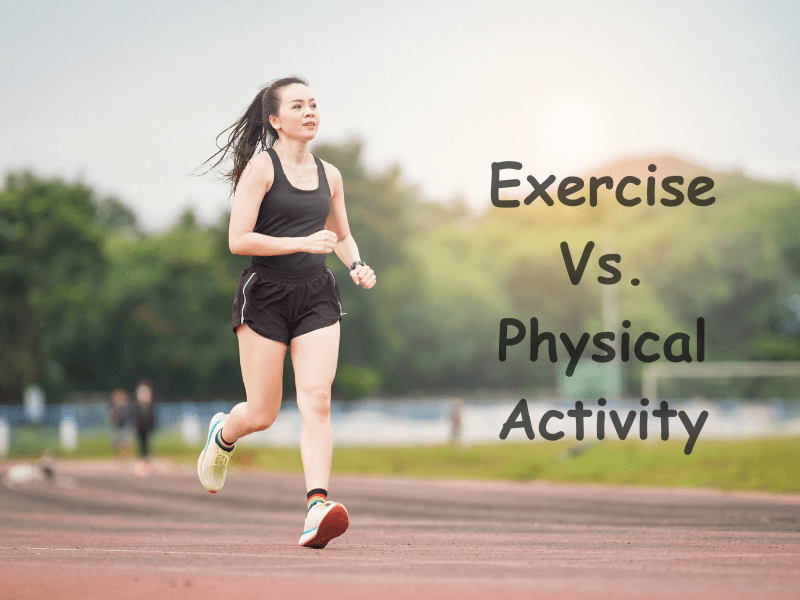Regular physical activity plays a crucial role in maintaining a healthy lifestyle. Whether it’s through exercise, sports, or simply staying active throughout the day, incorporating physical activity into our routines offers numerous benefits for our overall well-being. In this section, we will explore the importance of regular physical activity and delve into the various advantages it brings to our physical and mental health.
Engaging in regular exercise and maintaining an active lifestyle has been proven to have countless benefits. From improving cardiovascular health and strengthening muscles to enhancing flexibility and boosting energy levels, physical activity is essential for keeping our bodies functioning optimally. Additionally, regular exercise can help manage weight, reduce the risk of chronic diseases such as heart disease and diabetes, and improve sleep quality.

But the benefits of physical activity extend beyond just physical health. Engaging in regular exercise has been linked to improved mood and mental well-being. Exercise stimulates the release of endorphins – often referred to as “feel-good” hormones – which can help alleviate stress, anxiety, and depression. Furthermore, participating in activities that require focus and concentration can enhance cognitive function and improve overall brain health.
In this section, we will explore these benefits in more detail while highlighting practical tips on how to incorporate regular physical activity into our daily lives. By understanding the importance of staying physically active and embracing an active lifestyle, we can take significant steps towards achieving long-term health and well-being.
Table of Contents
Differentiating Exercise from Physical Activity: Various types of exercises
Exercise is a term that is often used interchangeably with physical activity, but it actually has a specific definition and characteristics that set it apart. Understanding the distinction between exercise and physical activity can help individuals design more effective fitness routines and achieve their health goals.
Exercise can be defined as planned, structured, and repetitive physical activity that aims to improve or maintain one or more components of physical fitness. It involves intentional movement with the purpose of enhancing cardiovascular endurance, muscular strength and endurance, flexibility, or a combination of these.

There are various types of exercises that fall under the umbrella of exercise. Aerobic exercises, also known as cardio exercises, focus on increasing cardiovascular endurance by elevating heart rate for an extended period. Examples include running, cycling, swimming, and dancing.
Strength training exercises aim to increase muscular strength and endurance by using resistance or weights. This can include activities such as weightlifting, bodyweight exercises like push-ups and squats, or using resistance bands.
Flexibility exercises focus on improving joint range of motion and stretching muscles to enhance flexibility. Yoga and Pilates are examples of activities that emphasize flexibility.
It’s important to note that while physical activity encompasses any bodily movement produced by skeletal muscles resulting in energy expenditure, exercise specifically refers to structured activities with specific goals in mind.
Decoding the Difference: Exercise and Physical Activity Explained
Understanding the distinction between exercise and physical activity allows individuals to tailor their fitness routines based on their specific needs and goals. Incorporating a combination of aerobic exercise, strength training, and flexibility exercises into a well-rounded routine can help improve overall fitness levels and promote better health outcomes.
Physical activity plays a crucial role in maintaining overall health and well-being. The spectrum of physical activities ranges from light to vigorous, each level offering unique benefits for individuals of all ages and fitness levels.
Light physical activities are low-intensity exercises that can easily be incorporated into daily routines. Examples include walking, stretching, gardening, or household chores. These activities help improve circulation, flexibility, and mental well-being.

Moderate physical activities require more effort and increase heart rate and breathing. Brisk walking, cycling at a moderate pace, swimming, or dancing fall under this category. Engaging in moderate physical activities regularly can enhance cardiovascular health, strengthen muscles and bones, as well as aid in weight management.
On the other end of the spectrum are vigorous physical activities that demand high-intensity effort. Running or jogging at a fast pace, playing sports like basketball or soccer competitively, or engaging in high-intensity interval training (HIIT) are examples of vigorous activities. These types of exercises boost cardiovascular endurance, build muscle strength and power while burning calories efficiently.
It is important to note that the intensity level of an activity may vary depending on an individual’s fitness level and health condition. It is recommended to consult with a healthcare professional before starting any new exercise regimen to ensure safety and suitability.
Incorporating a combination of light, moderate, and vigorous physical activities into one’s routine can provide a well-rounded approach to fitness. Finding enjoyable activities within each level allows individuals to maintain an active lifestyle while reaping the numerous benefits associated with regular exercise.
Regular exercise and general physical activity both have numerous benefits for overall health and well-being. However, it is important to understand the distinction between the two and how they impact different aspects of our health.
Exercise, specifically structured physical activity performed with the intention of improving fitness or achieving specific health goals, has been extensively studied for its positive effects on cardiovascular health. Engaging in regular exercise can help improve heart function, lower blood pressure, reduce the risk of heart disease, and improve overall cardiovascular fitness.
In addition to cardiovascular benefits, exercise plays a crucial role in weight management. It helps burn calories, increase metabolism, and build lean muscle mass. Regular exercise can aid in weight loss or maintenance by creating an energy deficit that promotes fat loss while preserving muscle mass.

On the other hand, general physical activity refers to any bodily movement produced by skeletal muscles that results in energy expenditure. This includes activities such as walking, gardening, taking the stairs instead of the elevator – essentially any form of movement that is not structured exercise.
While general physical activity may not provide the same targeted benefits as structured exercise on cardiovascular health or weight management specifically, it still offers numerous health advantages. Engaging in regular physical activity can help improve mood and mental well-being by reducing stress levels and promoting the release of endorphins – chemicals in the brain that act as natural painkillers and mood elevators.
Furthermore, both regular exercise and general physical activity contribute to overall improvements in strength, flexibility, balance, bone density, and immune function. They also play a vital role in preventing chronic diseases such as diabetes and certain types of cancer.
While regular exercise provides targeted benefits for cardiovascular health and weight management goals through structured physical activity sessions; general physical activity encompasses all forms of movement throughout daily life which contributes to overall health improvements. Incorporating both into our routines is essential for maximizing the multitude of benefits they offer on our mental and physical well-being.
Finding the right balance between frequent exercise routines and integrating physical activities throughout the day is essential for maintaining a healthy lifestyle. While structured exercise routines are important for building strength and endurance, incorporating physical activities into your daily routine can provide additional health benefits.
To establish a frequent exercise routine, it’s important to set realistic goals that align with your fitness level and schedule. This could involve dedicating specific times during the week for activities such as jogging, cycling, or attending fitness classes. Consistency is key when it comes to reaping the benefits of exercise, so finding activities that you enjoy and can commit to is crucial.
However, it’s equally important to integrate physical activities throughout the day to counteract sedentary behavior. This can be achieved by making simple changes in your daily routine. For example, taking the stairs instead of the elevator, walking or cycling instead of driving short distances, or incorporating stretching exercises during work breaks.

Integrating physical activity into your routine not only helps burn calories but also promotes better cardiovascular health and improves overall well-being. It can boost energy levels, reduce stress levels, improve mood and cognitive function.
By finding a balance between structured exercise routines and incorporating physical activities throughout the day, you can optimize your overall fitness level and enhance your overall quality of life.
Embracing a healthy lifestyle by combining regular exercise and physical activity is crucial for overall well-being. The benefits of incorporating these habits into our daily lives are numerous.
Regular exercise helps to improve cardiovascular health, strengthen muscles and bones, and maintain a healthy weight. Engaging in physical activity not only boosts our physical fitness but also enhances mental well-being by reducing stress and anxiety.
By making exercise and physical activity a priority, we can reduce the risk of chronic diseases such as obesity, diabetes, and heart disease. Additionally, these habits contribute to increased energy levels and improved sleep patterns.
It is important to remember that finding activities that we enjoy is key to sustaining an active lifestyle. Whether it’s going for a run in the park or participating in group fitness classes, finding activities that bring us joy will make it easier to stay motivated.
Incorporating regular exercise and physical activity into our daily routines may require some effort initially but the long-term benefits are well worth it. By prioritizing our health through these habits, we can lead happier and more fulfilling lives.
Also Read: Best Cardio Workout For Weight Loss: A Comprehensive Overview


2 thoughts on “Understanding the Difference Between Exercise and Physical Activity: What You Need to Know”